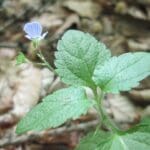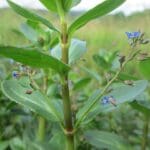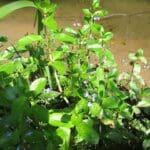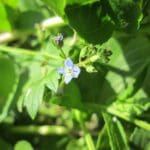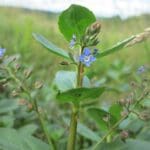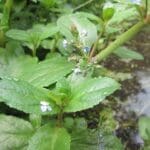Brooklime / Spring / Summer / Autumn / Edible
Brooklime is a succulent, perennial plant. Native to the Mediterranean but naturalised across the whole of Europe. It is believed that it arrived in the UK with imported marble sculptures from Italy. It has been used as a salad ingredient in Northern Europe for centuries.
Common Names
Brooklime, European speedwell
Botanical Name
Veronica beccabunga
Scientific Classification
Kingdom – Plantae
Order – Lamiales
Family – Plantaginaceae
Physical Characteristics for Brooklime
Leaves
The leaves are round to oval, glossy, deep green and leathery to touch. They are finely serrated at their edges and they grow in opposite pairs along a thick, hollow succulent stem.
Flowers
The flowers are tiny and delicate. They are normally dark blue in colour but pink varieties can sometimes be found. They have four petals and open wide in full sunlight.
Habitat
Ditches, meadows, ponds and river banks.
Known Hazards
None is known for the plant but due to where it grows there is the risk of liver fluke if you are going to eat it raw.
Could be Confused with
It’s quite a distinctive plant, there’s not too much that you could confuse it with really.
Edible Uses
The leaves, flowers and stems are all edible raw or cooked and they have a pleasant flavour similar to watercress. Although, older parts can be a little bitter.
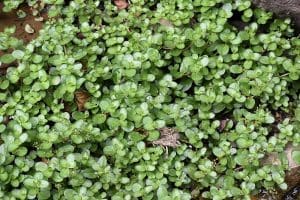
Notes on Herbal Uses
Brooklime along with Watercress and Scurvy grass were traditionally used to fight scurvy, but none of these plants are particularly high in Vitamin C and the traditional method of preparing them would have destroyed what they did contain making it quite ineffective.
However, it is rich in antioxidants such as flavonoids and phenolics, which help fight chronic disease.
It was traditionally used as a diuretic treatment for jaundice, urinary and kidney ailments, an expectorant for coughs and colds.
Extra notes from the Foragers
It’s thought that the botanical name, beccabunga means pungent and derives from the Flemish word ‘beckbunge’ meaning ‘mouth smart’ I’d imagine in reference to the peppery flavour.
The lime part of its common name is thought to come from the Anglo-Saxon word for mud in reference to where it’s found.



